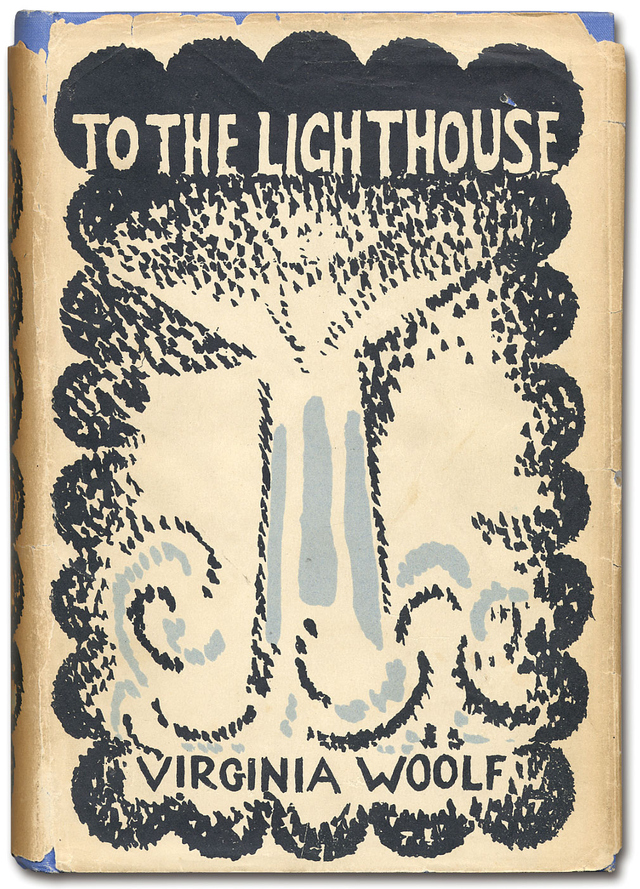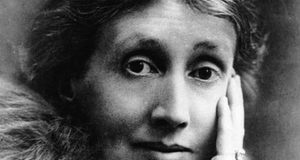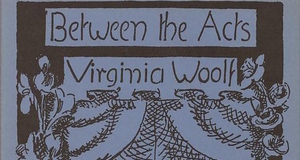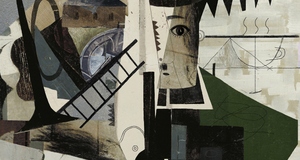Depending on Distance: Mrs. Ramsay as Artist and Inspiration in Virginia Woolf's To the Lighthouse
By
2014, Vol. 6 No. 06 | pg. 1/2 | »
KEYWORDS:
Virginia Woolf’s To the Lighthouse is a novel of artists and within its pages appear two characters who are clearly labeled as such. One artist is Augustus Carmichael, the poet who spends his days reclining on the lawn. We are told that his work meets with success after the war: “He was growing old...he was growing famous” (Woolf, 1927/2005, p. 197). Beyond that we know little about him save the few thoughts by other characters about him. The other labeled artist is Lily Briscoe, who spends nearly the entire book either painting or thinking about her painting. Everything in her world, it seems, is anchored to her artwork. Interestingly though, Lily is not eager for others to view her work. In fact, she actively monitors her surroundings to prevent such an occurrence: “she kept a feeler on her surroundings lest some one should creep up, and suddenly she should find her picture looked at” (p. 21). It is by the thoughts and from the viewpoint of this private artist that we find the majority of the story narrated. There is, however, another significant artist in the story: Mrs. Ramsay. Focusing on her dinner party as her major artistic endeavor reveals several parallels to Lily’s artistic work, ranging from descriptions to demises. While Lily’s art can be described as the art of representation, Mrs. Ramsay’s is best considered to be the art of connection, and ultimately it is Mrs. Ramsay’s art that allows Lily to complete her own, while providing a glimmer of hope for its permanence. "So much depends... upon distance" Woolf describes Mrs. Ramsay’s dinner scene as if looking at a painting. She begins with physical description and setting before homing in on the details that illuminate a deeper meaning. Woolf begins the dinner scene with a surface level description of its physical appearance as Mrs. Ramsay is “taking her place at the head of the table, and looking at all the plates making white circles on it...an infinitely long table and plates and knives” (p. 85). As in studying a painting, the viewer first notices the setting and event portrayed before looking at deeper details and eventually for meaning in the artwork. Later, when the candles are lit, the description zooms in to focus on more specific details: “the flames stood upright and drew with them into visibility the long table entire, and in the middle a yellow and purple dish of fruit” (p. 99). This dish of fruit serves to guide readers’ attentions. In fact, Woolf continues its description through the filter of Mrs. Ramsay’s mind: What had she done with it, Mrs. Ramsay wondered, for Rose’s arrangement of the grapes and pears, of the horny pink-lined shell, of the bananas, made her think of a trophy fetched from the bottom of the sea, of Neptune’s banquet, of the bunch that hangs with vine leaves over the shoulder of Bacchus (in some picture), among the leopard skins and the torches lolloping red and gold...Thus brought up suddenly into the light it seemed possessed of great size and depth, was like a world in which one could take one’s staff and climb hills, she thought, and go down into valleys... (p. 99) This passage does two things to position the party in the realm of art. The first is its allusions to Neptune and Bacchus. Like so many artists before her, Mrs. Ramsay is connecting her creation to those characters and scenes that have come before and that readers and viewers will recognize and identify with. Furthermore, Woolf specifies in parentheses that the image Mrs. Ramsay has in mind is, in fact, another painting, as if to make certain readers do the same.To further identify the dinner party scene as a painting, Woolf chooses to not only zoom in on the details, but to exclude everything beyond the scene. She notes that the “faces on both sides of the table were brought nearer by the candlelight,” “the night was now shut off by panes of glass,” and that the attendants “were all conscious of making a party together in a hollow, on an island” (p. 99). In this way, the dinner scene takes on the characteristic of a painting as everything outside of the viewable area ceases to exist. As in a painting, the viewer is not privy to what exists, if anything, outside of that which the artist has chosen to recreate on the canvas. In this way, the scene has been described like a painting, has referenced another painting, and been framed as a painting. This perhaps leaves readers with the responsibility of likening the scene, when viewed in the context of the novel, to some other work of art. Described as it is, in many ways the scene comes to represent the novel’s own Last Supper. This is a group of people from varied backgrounds gathered together to eat at one table, at the behest of a central character who serves to unite them. Many of these characters, including the event’s creator herself, will soon die, making a repeat of the evening an impossibility. There is, of course, the argument that this description of the dinner party as a painting is not due to the party’s being a work of art, but rather to Woolf’s own choices as a novelist. She describes scenes spatially and has multiple characters describe what they see, as their minds seek meaning and connections in the world and characters around them. While this is certainly true, Mrs. Ramsay’s actions and thoughts as she hosts and conducts the social interactions that form the dinner party clearly serve to raise her into the role of an artist at her easel. The description of the first physical action in the dinner party scene reveals Mrs. Ramsay ladling soup. This action will be mirrored by the motions of Lily’s painting years later, long after Mrs. Ramsay is dead: The brush descended. It flickered brown over the white canvas; it left a running mark. A second time she did it—a third time. And so pausing and so flickering, she attained a dancing rhythmical movement, as if the pauses were one part of the rhythm and the strokes another, and all were related; and so, lightly and swiftly pausing, striking, she scored her canvas with brown running nervous lines which had no sooner settled there than they enclosed (she felt it looming over her) a space. Down in the hollow of one wave she saw the next towering higher and higher above her. (pp. 161-62) Every part of the description of Lily’s painting echoes Mrs. Ramsay’s dinner party. From the action of ladling soup represented by Lily’s brush strokes to the paint “flickering” over the canvas as the candles flickered over the faces around the table at the dinner party, to the “brown running nervous lines” that enclose the space much as the window panes did at the dinner scene, to the “hollow of one wave” as a reprise of the party “in a hollow, on an island,” these two scenes are inextricably linked on every level by way of their descriptions. Beyond that scene in particular, though, Mrs. Ramsay’s thinking, as she attempts to guide the party in the directions she desires, mirrors Lily’s thinking as she paints, both before the dinner party and all those years later. We see Mrs. Ramsay acknowledge this fact: “Raising her eyebrows at the discrepancy—that was what she was thinking, this was what she doing—ladling out soup...” (p. 86). Unlike Lily’s watching the others in their various activities as she paints, however, Mrs. Ramsay’s thinking is for a purpose; hers is to complete her own artwork. Lily uses an easel, canvas, brushes, and paints to create her art, but Mrs. Ramsay must use the dinner—its decorations, its food, and most importantly its attendants—to create a sense of connection among those attendants. Only in this will her project be a success. So she begins with ordering the Boeuf en Daube ahead of time, worrying about it being burned, telling the girl where to set it on the table, and ensuring that Mr. Bankes receives a choice piece. She also instructs her guests where they should sit: “‘William, sit by me,’ she said. ‘Lily,’ she said, wearily, ‘over there’” (p. 85). This is an ongoing process that, in fact, she notes should be adjusted in the future. Though they were the two she seated first, Mrs. Ramsay realizes she has made a mistake with Lily and Mr. Bankes. “Foolishly, she had set them opposite each other. That could be remedied tomorrow” (p. 106). And Mrs. Ramsay has grander plans for them than dinner conversation: “Oh, but nonsense, she thought; William must marry Lily. They have so many things in common” (p. 106). Mrs. Ramsay’s dinner party is the attempted creation of some thing that will somehow cause a moment to last or to endure beyond its own expiration. We see this in her thoughts and in the legacy that she leaves. As Wirth-Nesher (1976) notes in “Form as Fate: Everyman as Artist in Virginia Woolf’s To the Lighthouse,” “For Mrs. Ramsay...the creation of community, no matter how momentary, shuts out the darkness” (p. 74). However, the party does not begin that way. “But what have I done with my life?” laments Mrs. Ramsay as the dinner scene gets under way. “She had a sense of being past everything, through everything, out of everything, as she helped the soup, as if there was an eddy—there—and one could be in it, or one could be out of it, and she was out of it” (Woolf, 1927/2005, p. 85). This begins to change, however, when Mrs. Ramsay notices that Augustus Carmichael (notably, the one commercially successful artist in the novel) is also looking at the dish of fruit. “...and to her pleasure (for it brought them into sympathy momentarily) she saw that Augustus too feasted his eyes on the same plate of fruit, plunged in, broke off a bloom there, a tassel here, and returned, after feasting, to his hive. That was his way of looking, different from hers. But looking together united them” (p. 99). In this uniting, we find Mrs. Ramsay’s success. She considers her party to be a success, as well, when we find her noting: It partook, she felt...of eternity...there is a coherence in things, a stability; something, she meant, is immune from change, and shines out...in the face of the flowing, the fleeting, the spectral, like a ruby; so that again tonight she had the feeling that she had once today, already, of peace, of rest. Of such moments, she thought, the thing is made that endures. (p. 107) She has succeeded in shutting out the darkness, in bringing people together, and in creating that moment which will endure. This enduring moment, we will find, ultimately provides the necessary inspiration for Lily to complete her own painting.Continued on Next Page » Suggested Reading from Inquiries Journal
Inquiries Journal provides undergraduate and graduate students around the world a platform for the wide dissemination of academic work over a range of core disciplines. Representing the work of students from hundreds of institutions around the globe, Inquiries Journal's large database of academic articles is completely free. Learn more | Blog | Submit Latest in Literature |

















